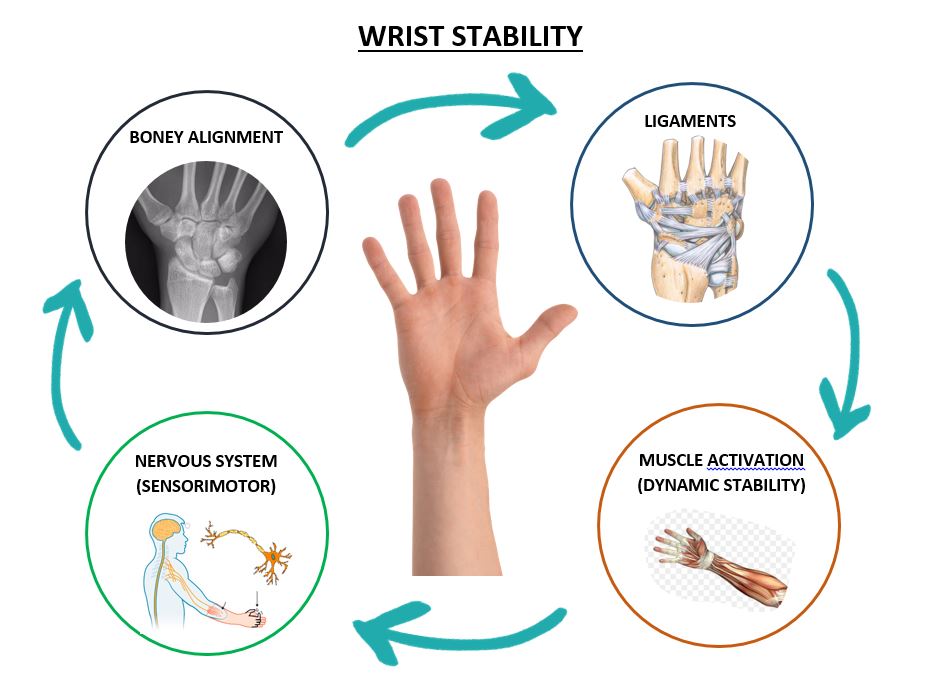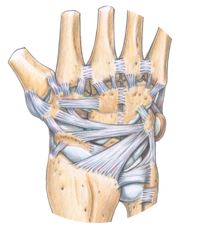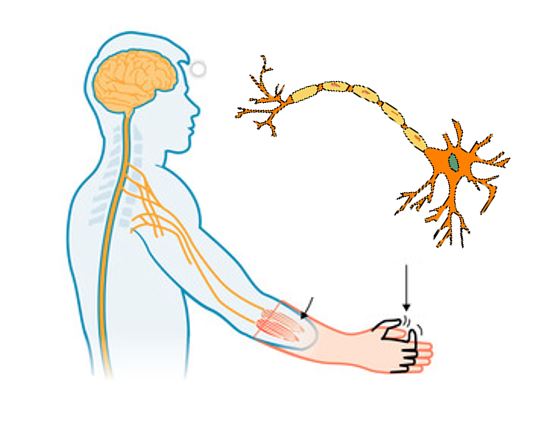Wrists are highly complex regions of the upper limb. Our wrists are responsible for positioning our hands to facilitate function and tolerating heavy loads that allow us to lift, carry, push and weight bear through our arms. Heavy demands are placed on our wrists every day and in order to do their job properly, wrists need to be strong and stable. The concept of stability is important – our wrists need to be able to move through their normal planes of movement while still maintaining correct alignment and support when loads are applied to them. When wrists are unstable, this usually results in pain and dysfunction. Unstable, weak wrists are a common cause of wrist pain, and hand therapists are specialised in recognising this and rehabilitating them accordingly.
What is wrist stability?
There are four main contributors to wrist stability. These are:
-Boney
alignment + congruency
-Ligamentous support
-Muscle activation
(Dynamic stability)
-Nervous system
(Sensorimotor)
These four contributors work together cohesively to form a stable, pain-free wrist. If one area of this team isn’t working properly, this will result in weakness and sometimes pain. Each of these areas are equally important in rehabilitating a wrist.

 Boney Alignment + Congruency
Boney Alignment + Congruency
Our wrists are made up of 8 carpal bones that articulate with 2 long forearm bones. Our carpals also articulate with the bones that make up our hand and thumb (metacarpals). Each of the eight carpal bones have a unique shape and structure that allows each of them to move and glide in complex motions. This gives us full circular range of motion of our wrist. It’s important that these bones remain in their correct position to distribute the force applied to our wrist in the correct places. If our bones have been injured or have moved into an incorrect alignment, this will cause irregular distribution of forces and place load into areas of the wrist that are not designed to cope with such force. This typically results in pain and can lead to other structural damage of the wrist.
Common causes of changes to boney alignment are fractures of the wrist, underlying ligament injuries and osteoarthritis.
 Ligamentous support
Ligamentous support
Due to the high number of bones and articulations of the wrist, there needs to be lots of ligaments to hold them all together! The wrist has approx. 123 named ligaments and researchers continue to study them in more detail. Ligaments are soft tissue structures that hold the wrist bones together and maintain proper boney alignment. They work together to stretch and allow normal movement of the wrist, but become taught at certain points to restrict movement that is dangerous to the wrist. Our ligaments are the primary stabilisers of the wrist. Disruption to the larger ligaments of the wrist can cause laxity between the wrist joints, which can result in clicking or clunking sensations in the wrist with movement. This laxity may also distribute loading forces into irregular areas of the wrist and contribute to pain. As there are so many ligaments in the wrist that work together, minor injuries to the smaller ligaments in the wrist are usually well tolerated and may resolve well on their own. However, injuries to the larger, more important ligaments of the wrist can be extremely troublesome and can lead to serious wrist dysfunction. The usual culprits for wrist ligament injuries are the Scapholunate Ligament (sometimes thought of as the “ACL of the wrist”), the Lunotriquetral Ligament and the Triangular Fibrocartilage Complex (TFCC).
In addition to holding our bones in place, ligaments also provide sensory feedback to our brains about where our wrists and hands are positioned. This is important for wrist stability and is explained further below.
Wrist ligaments are typically injured when our wrists are stretched beyond their limits, such as during awkward falls or forceful twisting injuries.
 Muscle activation
Muscle activation
Our muscles provide secondary support to our joints and are known as dynamic stabilisers. The muscles that move the wrist and hand begin in the forearm, travel down the arm and attach around the wrist (mainly to the base of the hand). As the muscles contract to move our hand and wrist, they apply forces to our wrist bones which cause them to move and be pulled in certain directions. In this way, they further stabilise the joints of wrist. If people have poor muscular strength (due to weakness, prior injury, or neurological condition, etc.), more stress is placed on the ligaments and boney structures of the wrist, leading to pain and dysfunction. Much research has been done into the different forearm muscles and the effects they have on different areas of the wrist, and by strengthening targeted muscles we can provide additional stability to the wrist in areas that may be deficient.
Our muscles also need to know exactly when to turn on quickly and when to switch off, just in case our arms need to react very quickly, eg. tripping over or trying to catch something that has fallen. This leads us to the final section.
 Nervous system (Sensorimotor)
Nervous system (Sensorimotor)
This is an important area that’s sometimes overlooked when rehabilitating a wrist. In order for the bones, ligaments and muscles to work cohesively together, our nervous system must be able to send the correct signals to create smooth and controlled movements of the wrist. Neuromuscular stabilisation is a complex and intricate – it relies on our nervous system being able to correctly receive information from our ligaments about where our joints are positioned in space, receiving and processing this information in the brain, and then transmitting an appropriate response back to our muscles in the arm to either contract or relax to facilitate movement or strength. And all of this must happen in nanoseconds! The amazing thing about our bodies is that a person can have very poor ligament support but still have a wrist that functions normally if they have excellent neuromuscular support. This is the reason this area of wrist stability is largely focused on in wrist rehabilitation.
Neuromuscular stabilisation is typically reduced in people who have naturally hypermobile wrists, or had prolonged periods of wrist immobilisation due to injury. Thankfully, this is an area that can be rehabilitated and targeted exercises can sharpen the sensorimotor control of a wrist.
The take home message…
Wrist stability is complex! In order to have a fully functioning and stable wrist, multiple systems must work together an in intricate and cohesive manner. If a person is deficient in one of the four components of wrist stability, intervention in the remaining, healthy areas can be applied to make up for the deficiency. If you are experiencing wrist pain, it could be that you have an unstable wrist due to weak muscular support and poor sensorimotor feedback. Or there could be underlying structural issues with the bones or ligaments of the wrist. Hand therapists are skilled in assessing where the deficiencies may lie.
If you are experiencing wrist pain, you can make an appointment with one of our therapists for a comprehensive assessment.
